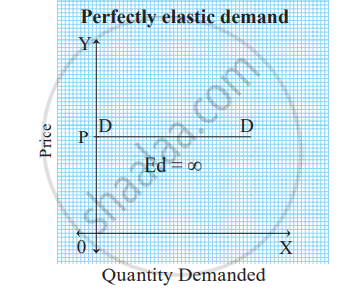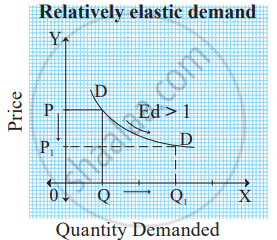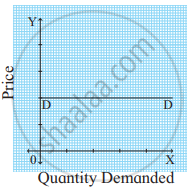Topics
Introduction to Micro and Macro Economics
Micro Economics
Macro Economics
Utility Analysis
- Utility
- Types of Utility
- Concepts of Utility
- Relationship Between Total Utility and Marginal Utility
- Law of Diminishing Marginal Utility
- Assumptions of Diminishing Marginal Utility
- Exceptions to the Law of Diminishing Marginal Utility
- Criticisms of the Diminishing Marginal Utility
- Significance of the Diminishing Marginal Utility
- Relationship Between Marginal Utility and Price
- Diminishing Marginal Utility
Demand Analysis
Elasticity of Demand
Supply Analysis
Forms of Market
Index Numbers
National Income
- Concept of National Income
- Features of National Income
- Circular Flow of National Income
- Different Concepts of National Income
- Methods of Measurement of National Income
- Output Method/Product Method
- Income Method
- Expenditure Method
- Difficulties in the Measurement of National Income
- Importance of National Income Analysis
Public Finance in India
Money Market and Capital Market in India
- Financial Market
- Money Market in India
- Structure of Money Market in India
- Organized Sector
- Reserve Bank of India (RBI)
- Commercial Banks
- Co-operative Banks
- Development Financial Institutions (DFIs)
- Discount and Finance House of India (DFHI)
- Unorganized Sector
- Role of Money Market in India
- Problems of the Indian Money Market
- Reforms Introduced in the Money Market
- Capital Market
- Structure of Capital Market in India
- Role of Capital Market in India
- Problems of the Capital Market
- Reforms Introduced in the Capital Market
Foreign Trade of India
- Internal Trade
- Foreign Trade of India
- Types of Foreign Trade
- Role of Foreign Trade
- Composition of India’s Foreign Trade
- Direction of India’s Foreign Trade
- Trends in India’s Foreign Trade since 2001
- Concept of Balance of Payments (BOP)
Introduction to Micro Economics
- Features of Micro Economics
- Analysis of Market Structure
- Importance of Micro Economics
- Micro Economics - Slicing Method
- Use of Marginalism Principle in Micro Economics
- Micro Economics - Price Theory
- Micro Economic - Price Determination
- Micro Economics - Working of a Free Market Economy
- Micro Economics - International Trade and Public Finance
- Basis of Welfare Economics
- Micro Economics - Useful to Government
- Assumption of Micro Economic Analysis
- Meaning of Micro and Macro Economics
Consumers Behavior
Analysis of Demand and Elasticity of Demand
Analysis of Supply
Types of Market and Price Determination Under Perfect Competition
- Market
- Forms of Market
- Market Forms - Duopoly
- Equilibrium Price
Factors of Production
- Factors of Production - Land
- Factors of Production: Labour
- Factors of Production: Capital
- Factors of Production - Feature of Capital
- Factors of Production - Organisation
Introduction to Macro Economics
- Features of Macro Economic
- Importance of Macro Economic
- Difference Between Mirco Economic and Macro Economic
- Allocation of Resource and Economic Variable
National Income
Determinants of Aggregates
- Total Demand for Good and Services
- Concept of Aggregate Demand and Aggregate Supply
- Consumption Demand
- Investment Demand
- Government Demand
- Foreign Demand
- Difference Betweeen Export and Import
- Effect of Population of Consumption Expediture
- Types of Investment Expenditure
- Micro Eco-Equilibrium
Money
- Meaning of Money
- Type of Money
- Primary Function
- Secondary Functions
- Standard of Deferred Payment
- Standard of Transfer Payment
- Money - Store of Value
- Concept of Barter Exchange
- Difficulties Involved in the Barter Exchange
- Monetary Payments
- Concept of Good Money
Commercial Bank
Central Bank
- Definition - Central Bank
- Central Bank Function - Banker's Bank
- Central Bank Function - Controller of Credit
- Monetary Function of Central Bank
- Non Monetary Function of Central Bank
- Method of Credit Control - Quantitative
- Repo Rate and Reverse Repo Rate
- Central Bank Function - Goverment Bank
Public Economics
- Introduction of Public Economics
- Features of Public Economics
- Meaning of Government Budget
- Objectives of Government Budget
- Features of Government Budget
- Public Economics - Budget (1 Year)(1 April to 31 March)
- Types of Budget
- Taxable Income
- Budgetary Accounting in India
- Budgetary Accounting - Consolidated , Contingency and Public Fund
- Components of Budget
- Factor Influencing Government Budget
Notes
Types of Price Elasticity of Demand :
1) Perfectly Elastic Demand (Ed = ∞) :
When a slight or zero change in the price brings about an infinite change in the quantity demanded of that commodity, it is called perfectly elastic demand. It is only a theoretical concept. For example, 10% fall in price may lead to an infinite rise in demand.
`"Ed"="Percentage change in Quantity Demanded"/"Percentage change in Price"="∞"`
Ed = ∞

In the figure above, the demand curve DD is a horizontal line parallel to the X axis indicating perfectly elastic demand.
2) Perfectly inelastic demand (Ed = 0) :
When a percentage change in price has no effect on the quantity demanded of a commodity it is called perfectly inelastic demand. For example, 20% fall in price will have no effect on quantity demanded.
`"Ed"="%ΔQ"/"%ΔP"`
`"Ed"="0"/"20"="0"`
`"Ed"="0"`
In practice, such a situation rarely occurs. For example, demand for salt, milk.

In the figure above, when price rises from OP to OP1 or when price falls from OP to OP2, demand remains unchanged at OQ. Therefore, the demand curve is a vertical straight line parallel to the Y axis, indicating perfectly inelastic demand.
3) Unitary elastic demand (Ed = 1) :
When a percentage change in price leads to a proportionate change in quantity demanded then demand is said to be unitary elastic. For example, 50% fall in price of a commodity leads to 50% rise in quantity demanded.
`"Ed"="%ΔQ"/"%ΔP"="50"/"50"="1"`
∴ Ed = 1

In the figure above, when price falls from OP to OP1 (50%), demand rises from OQ to OQ1 (50%). Therefore, the slope of the demand curve is a 'rectangular hyperbola'.
4) Relatively elastic demand (Ed >1) :
When a percentage change in price leads to more than proportionate change in quantity demanded, the demand is said to be relatively elastic. For example, 50% fall in price leads to 100% rise in quantity demanded.
`"Ed"="%ΔQ"/"%ΔP"`
`"Ed"="100"/"50"`
∴ Ed = 2
Ed > 1

In the figure above, when price falls from OP to OP1 (50%), demand rises from OQ to OQ1 (100%). Therefore, the demand curve has a flatter slope.
5) Relatively inelastic demand (Ed < 1) :
When a percentage change in price leads to less than proportionate change in the quantity demanded, demand is said to be relatively inelastic. For example, 50% fall in price leads to 25% rise in quantity demanded.
`"Ed"="%ΔQ"/"%ΔP"="25"/"50"="0.5"`
`"Ed"="0.5"`
∴ Ed < 1

In the figure above, when price falls from OP to OP1 (50%), demand rises from OQ to OQ1 (25%). Therefore, the demand curve has a steeper slope.
For Better Understanding:
Degree of elasticity of demand |
Types of elasticity of demand |
Description Percentage |
| Ed = 0 | Perfectly inelastic | Change in price does not affect demand at all. |
| Ed = ∞ | Perfectly Elastic | Slight change in price brings infinite change in demand. |
| Ed = 1 | Unitary Elastic | Change in demand is equal to change in price. |
| Ed > 1 | Relatively Elastic | Change in demand is more than change in price. |
| Ed < 1 | Relatively Inelastic | Change in demand is less than change in price |


